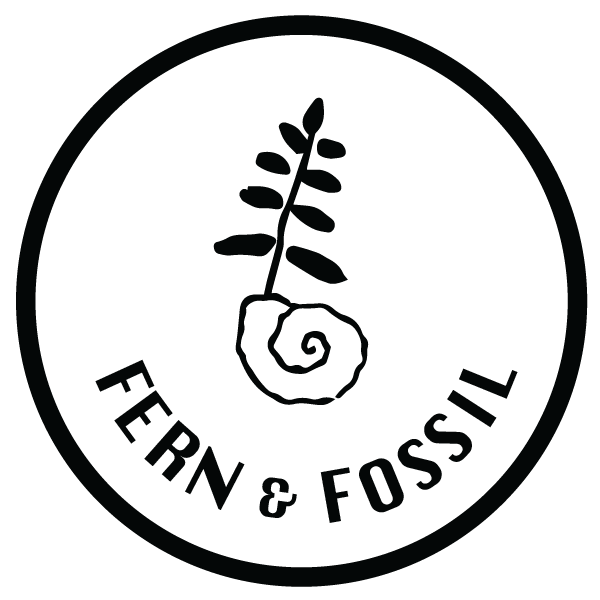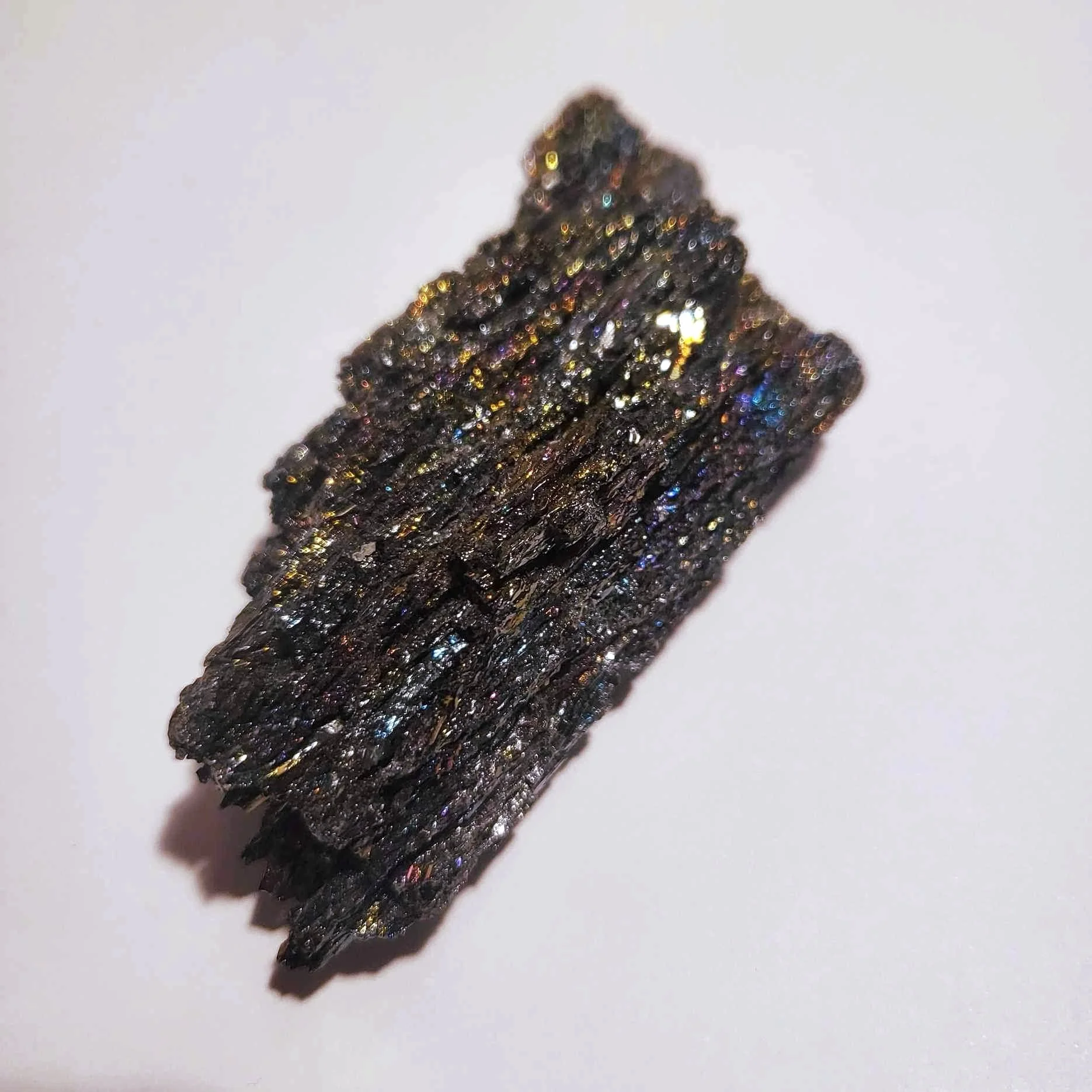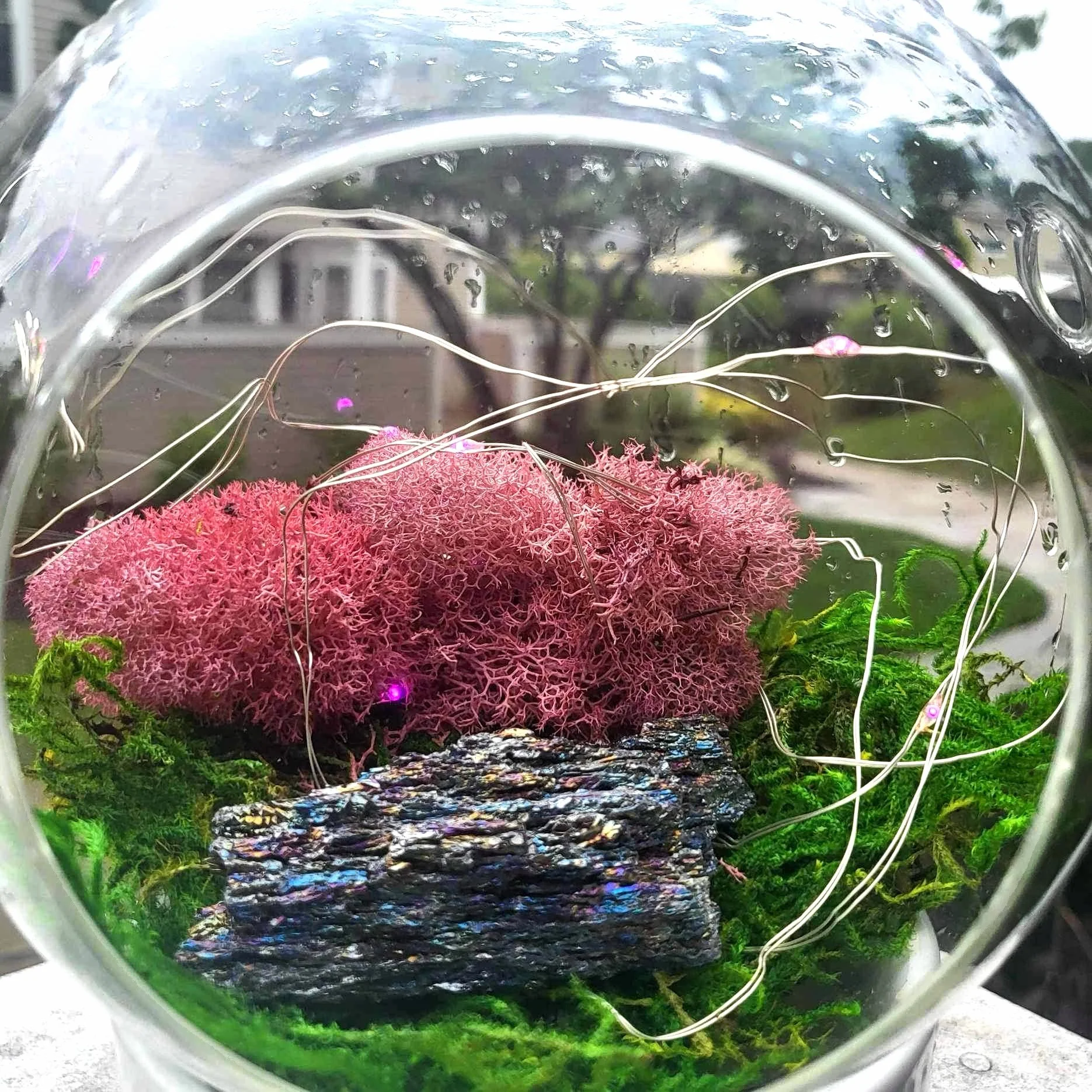Ina's Crystal Corner: Carborundum
After a bit of a hiatus, we’re back with Ina’s Crystal Corner. But this time, the series is back with a bit of a twist. Since we’ve already covered Fern & Fossil’s standard crystal options (Amethyst, Green Aventurine, Lapis Lazuli, Citrine, & Rose Quartz), I’m going to be covering various crystals I’ve been using personally in my home gardening the past few years and letting you know which ones have worked best for me and perhaps some of the crystals I wish I avoided (plant-wise that is). To start us off, we’re learning all about Carborundum. This crystal has a very colorful iridescent appearance that shifts depending upon the angle of light shined upon it. I love this particular crystal’s aesthetic in my indoor gardening because it looks like a shiny tree bark or a fallen asteroid.
This crystal is often mistakenly referred to as Rainbow Hematite (an Iron oxide) due to its colorful appearance. Cardorundum is actually lab-made Silicon carbide and widely used as an abrasive in manufacturing due to its durability and low cost. When I went to research more about it, I was shocked to see just how many practical uses it has and how many different goods it’s used to make. As an artist, I was particularly interested in the fact that it’s used for art practices such as printmaking and drawing. I recommend reading up on Carborundum mezzotint, a form of printmaking that was popularized in the 1930s in Philly, PA by artists like Dox Thrash if you’re interested. Originally used to grind down lithography stones, Carborundum is used today to create gradients and sandy texture in prints. It’s also used in the manufacturing of graphite pencils. So not only is it a beautiful crystal to look at, it’s a pretty practical one too. Although most Carborundum is lab-made, it is found in low quantities in meteors when naturally occurring. Another name for Carborundum is Moissanite when cut in a gem formation and it’s frequently used in jewelry (a great substitute for diamonds too!)
Carborundum’s healing properties are believed to encourage intuition and discernment to its user, enhancing communication and transmuting thought into action. It’s unsurprising that this crystal is associated with knowledge and the sign of Aquarius given its varied uses across technology. Its conductive properties and minerals make it a great crystal for gardening, magnifying the healing energies of plants. Personally, I got it because it’s supposed to help with stress relief and managing depression/anger. Much like humans, your plant babies can get stressed too when its environment isn’t suitable. Similar to Green Aventurine, Carborundum is a great crystal for plants when repotting them to reduce stress.
🔮 The Verdict on Carborundum 🔮
🌱 Safe for Gardening, not harmful but little evidence of benefits
🌙 Great for Grounding, Emotional Healing, Enhancing Intuition, Releasing Negativity, Boosting Mood
⭐⭐⭐
*As always, a disclaimer that I am NOT a spiritual advisor here and only seek to provide others with knowledge on how crystals may affect their plants and vice versa*



